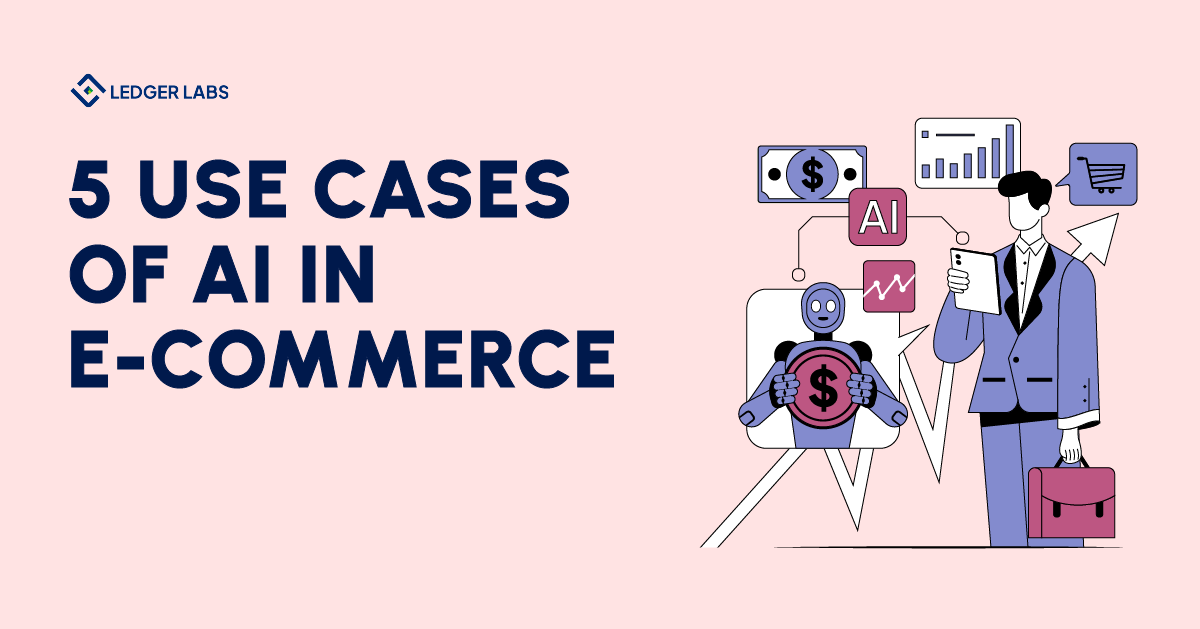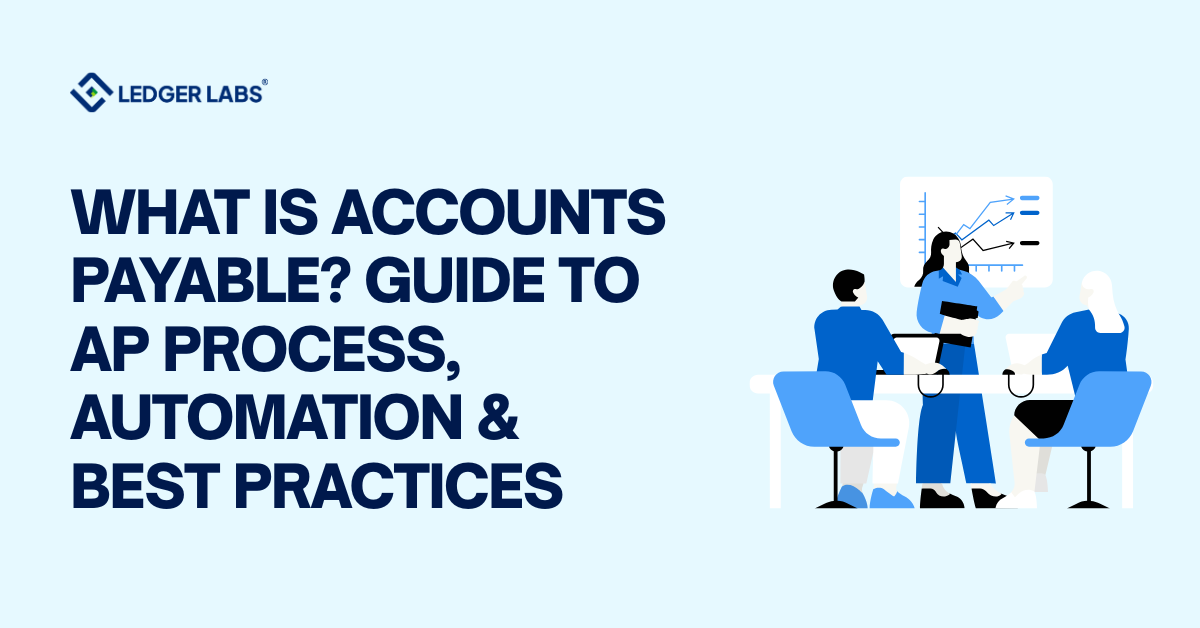AI in e-commerce is predicted to reach a $22.60 billion global market by 2032. 71% of large enterprises have already implemented or are in the process of implementing AI into their business.
Today, AI is helping online retailers create an optimized shopping experience for customers using advanced AI-powered tools. These tools analyze data to create efficiencies and understand customers better.
Whether it is to set dynamic product pricing or provide tailored product recommendations, e-commerce businesses are leveraging artificial intelligence to improve their business and customer’s shopping experiences.
Let’s explore the top use cases of AI in e-commerce.
- 49% of customers purchased from personalized product recommendations.
- AI-powered tools help businesses improve customer experience and increase business efficiency.
- Alexa and Siri are digital or voice assistants that help customers with their voice shopping.
- 28% of businesses say AI has helped them improve sales.
AI in e-commerce – a deeper look at what it means
Artificial intelligence is implemented in e-commerce to automate business processes, improving efficiency and production.
For example, chatbots help business owners offer better customer service by promptly answering customer questions instead of keeping customers waiting.
Many customers abandon their carts midway through the shopping process. Automated cart abandonment emails allow businesses to send reminders to customers for recovery.
AI in e-commerce has evolved significantly over the past few years. Today, generative AI goes further in providing customers with better service.
For example, Amazon uses a large language model (LLM) to improve voice interactions with customers. It no longer sticks to monotonous responses, resulting in poor interactions. Instead, it now comes with added sensors that identify non-verbal cues like body language, eye contact, and general knowledge.
Online retailers now leverage AI to understand customers better and offer them exactly what they need, want, or like.
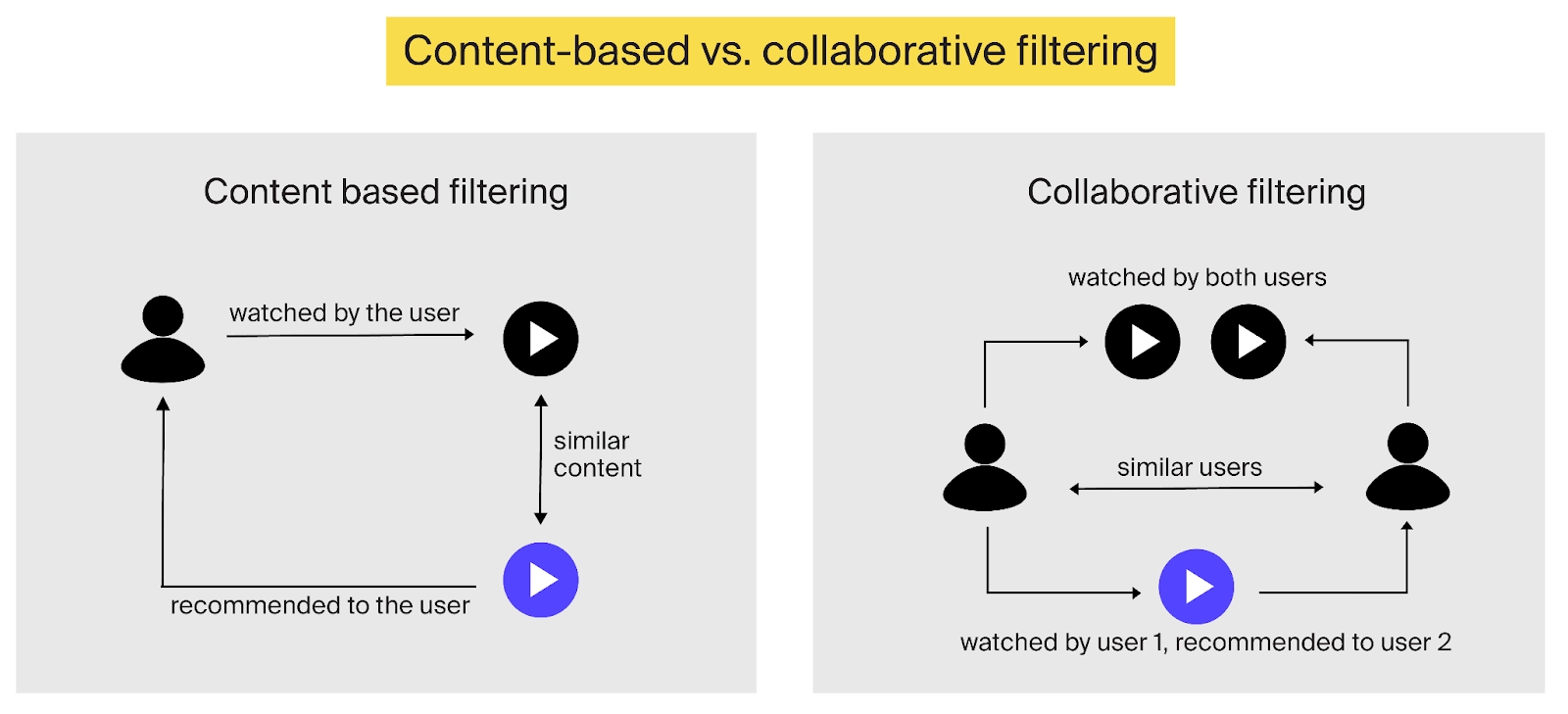
They use content-based and collaborative-based filtering to analyze their purchasing patterns, browsing history, demographics, and even the time spent on certain products.
This information creates customized product recommendations so customers can find what they want faster.
- 28% of e-commerce businesses confirm AI increases sales.
- Alibaba has implemented AI and it has reduced logistics errors by 40%.
- 49% of customers have purchased a product via personalized product recommendations.
- 52% of e-commerce businesses find AI to be essential in financial forecasting.
5 use cases of AI in e-commerce
1. Automated accounting
Traditional data entry methods are prone to human error, and not to forget, they are extremely time-consuming. Accountants spend hours tracking, recording, and reconciling bank statements, invoices, and receipts.
With AI, you can automate routine tasks like tracking daily transactions and creating financial reports. It uses tools to analyze data faster and more accurately, saving businesses time and resources.
Automate routine tasks using AI-powered tools like Optical Character Recognition (OCR) and Machine Learning (ML).
OCR, for example, is a tool that reads and extracts information from scanned or PDF bank statements. It recognizes patterns, like duplicate entries, and identifies discrepancies, such as missing transactions, in real-time. It also compares bank statements with your accounting entries to identify errors within seconds.
It reduces manual input, making your workflow more efficient.
The role of ML is also important to emphasize here as the more data an AI system processes, the more easily it adapts and learns to recognize the patterns and discrepancies mentioned above.
Businesses integrate AI-powered accounting tools like QuickBooks Online to make accounting processes more efficient, automating different tasks like bank reconciliation and tracking business transactions.
Let’s say a payment appears in a bank statement. AI will compare it with the existing records in QuickBooks. If a match is found, the transaction will automatically reconcile, if it’s not found, it will flag a discrepancy.
2. Voice shopping
E-commerce businesses use voice assistants like Siri and Alexa to improve customers’ shopping experiences, adding convenience to their daily lives to the point where they don’t even have to lift a finger to place an order online.
Siri or Alexa are digital assistants with built-in voice recognition technology that helps users understand verbal commands, like online shopping tasks.
It is important to note that digital assistants can be used to complete purchases or add products to your cart and are not limited to product searches only.
This method is especially convenient for routine purchases as voice assistants store information about your past purchases and search queries.
Digital assistants, like Alexa, work on a combination of technologies, automatic speech recognition (ASR), natural language processing (NLP), and artificial intelligence. While ASR converts your voice commands into text, NLP processes and gives it meaning. Artificial intelligence helps digital assistants generate a response to your command.
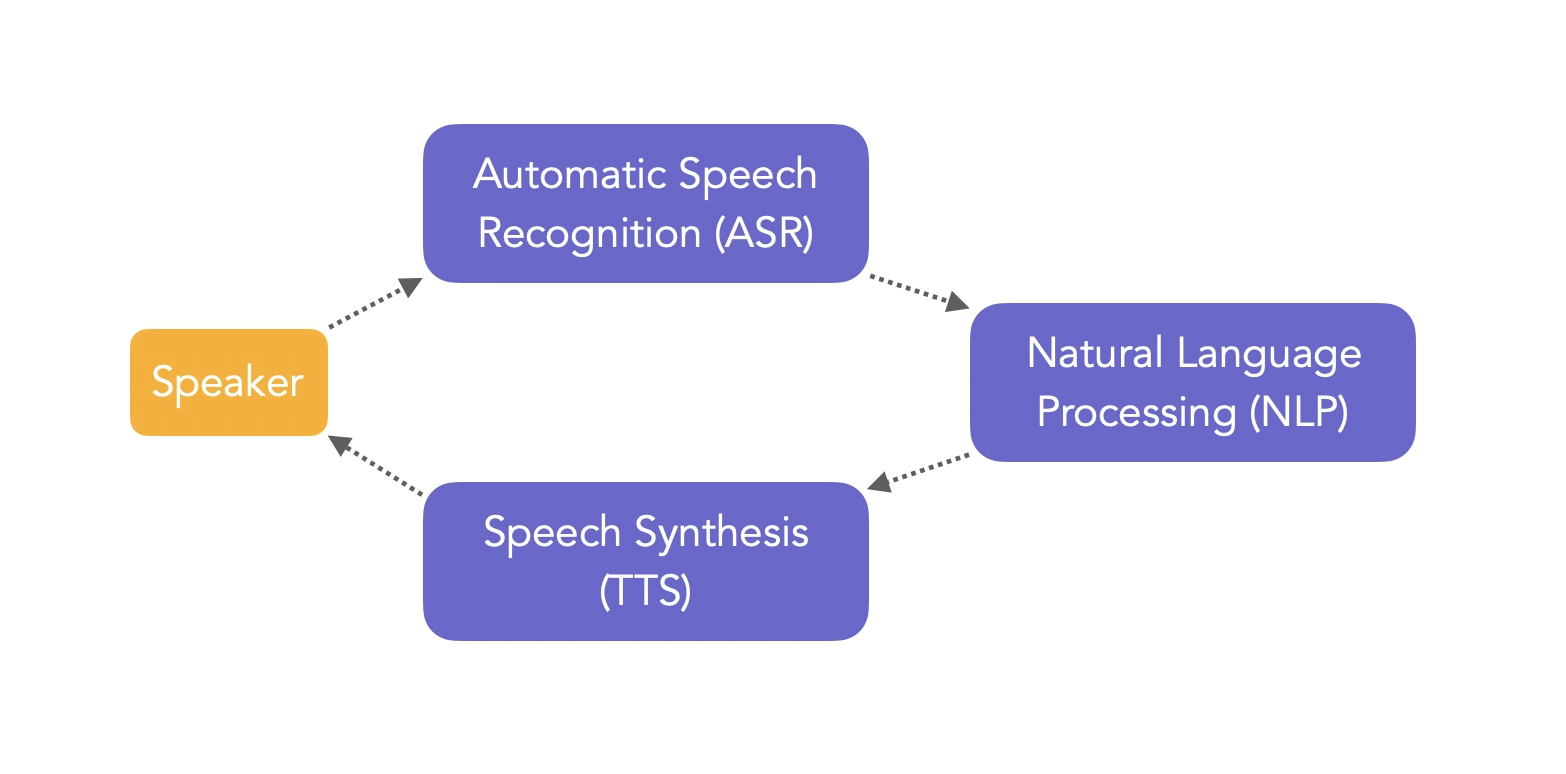
Voice assistants get better and continue to learn from interactions with users. They learn from past purchases and interactions, making the shopping experience more personalized.
Say you want to buy a leather jacket. You activate your voice assistant. Next, you can say “affordable leather jackets” and the voice assistant will show you results that match your voice command.
You can continue your search and send follow-up commands. For example, you can say “leather jackets under $500” or “affordable bomber leather jackets.”
This is also an example of attribute filtering which makes your search more specific.
You can continue the process, add products to your cart, and complete the purchase using voice or digital assistant
3. Optimized product pricing
Dynamic pricing is an e-commerce strategy that changes product prices through real-time data analysis. This approach is different from the traditional pricing strategy where products have fixed prices.
Businesses use AI and data to choose the best price at a particular time. So when the demand is high, the product price increases, but when it is low, the price drops accordingly.
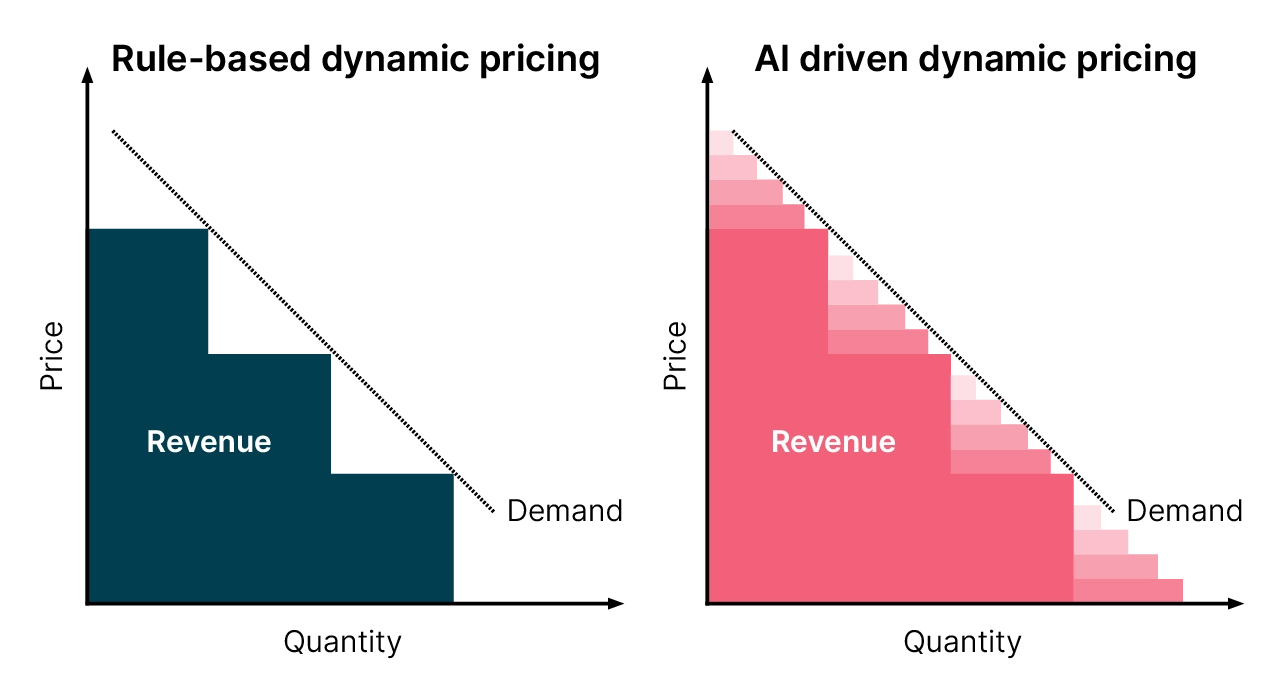
Factors that influence these changes include supply and demand, cost of raw materials, and stock availability. It also considers competitor prices and broader market conditions, like inflation and seasonal shifts. All of these factors are analyzed quickly using AI.
This strategy is highly beneficial for large enterprises with big inventories. It can be challenging to monitor the price of each product manually, but AI does it quickly and more effectively, giving businesses a competitive advantage.
Here’s how AI-powered dynamic product pricing helps businesses:
- AI analyzes large datasets, like historical sales data, from diverse sources within minutes using algorithms, machine learning models, and real-time data feeds.
- This helps businesses identify customer buying patterns giving them insight into customer behavior.
- This information helps them set the best price to increase sales and revenue. AI not only speeds up data analysis but also improves data accuracy.
Data analysis isn’t limited to historical sales data but also includes competitor analysis.
Businesses use competitor analysis software, like Prisync, to get real-time and accurate information about their product pricing, promotional campaigns, customer reviews, and even product visuals.
All of this information is analyzed to help your business set the best price. Let’s say your competitor offers a seasonal discount, this software will identify and adjust your prices accordingly.
Another way businesses use historical sales data analysis is to forecast customer demand. It helps them change the price according to the prediction and stay competitive.
This was how dynamic pricing works at a macro level. But this strategy works on a micro level too as AI can personalize the prices for different categories of customers, even individual customers.
Here, it analyzes their buying behavior, like individual preferences and their purchasing history, making changes in real-time to offer individual customers the best prices.
4. High-Quality Product Descriptions
Manual product descriptions require a lot of time for research and development. E-commerce platforms like Amazon and Walmart use AI-powered tools to generate compelling and SEO-optimized product descriptions faster.
The information about the product is sourced from websites and customer feedback using web scraping tools to get real-time product information and customer reviews from different e-commerce platforms.
AI-powered tools like Team-GPT use customer reviews to gauge keywords, and they are used in product descriptions to highlight that attribute more to the customer.

It uses advanced natural language processing techniques to identify patterns in customer reviews. It also recognizes the features customers appreciate the most while identifying areas for improvement, and categorizing them based on similar themes.
It has a sentiment analysis ability that understands reviews beyond words. It identifies customer’s feelings, whether positive or negative, highlighting the positive attributes further in the product description.
Let’s say a customer is searching for an anti-slip yoga mat. The products recommended to this customer will have the anti-slip property highlighted as a keyword in the description.
AI-powered tools like Team-GPT allow your entire team to interact with the AI engine, making this tool highly collaborative. It offers features such as Collaborative AI, AI Pages, and Chat forking.
- Collaborative AI lets your team work together, sharing ideas and prompts to create product descriptions. Your team can make suggestions and edit descriptions further to align them more with your brand’s tone.
- AI pages allow businesses to generate and edit SEO-optimized product descriptions. This feature is supported by a library of templates that match the brand’s tone.
- Chat forking is a feature that allows you to test and explore different versions of the product descriptions to assess its performance on different platforms, like social media.
Now if a human had sat down to perform all of these tasks, it would take up a lot of time. With AI-powered tools like Team-GPT, the process picks up speed, making it highly efficient.
5. Product recommendations
E-commerce businesses use generative AI to enhance customer experience by offering tailored product recommendations. It personalizes their experience, showing them exactly what they’re searching for, saving them time and effort.
This is done by analyzing user data to understand what appeals to specific customers.
Now this data is from the individual customer and it is combined with the rest of the customers in the pool. It includes what they like and how they use the website.
To identify what product would appeal to them, it uses two types of data filtering techniques: Collaborative and content-based filtering.
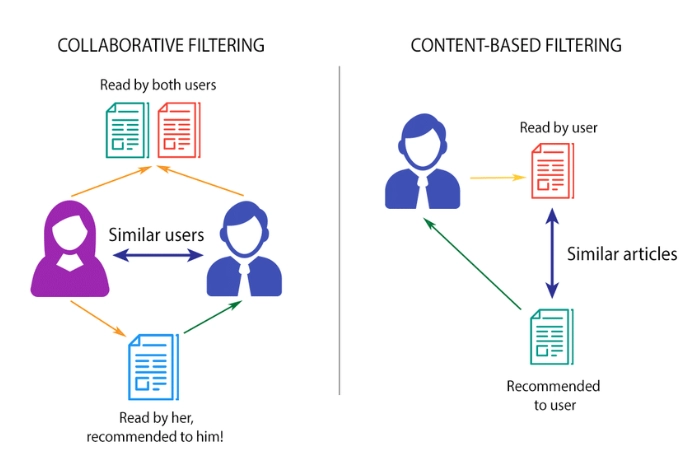
Collaborative filtering analyzes data from customers with similar preferences. You might have gotten “customers who bought this item also bought” as a suggestion at least once during your online shopping.
Collaborative filtering also improves product discovery for customers. This method analyzes customer data, like their purchasing and browsing history.
It is a great tool for e-commerce businesses as it helps with upselling and cross-selling products. Let’s say a customer added a pair of white jeans to their shopping cart. You can suggest to them a navy blue cardigan that other customers bought with these white jeans.
This recommendation is made using data from customers with similar interests.
The other technique that AI uses is content-based filtering. Think “If you liked this, you might also like this” recommendations. This method essentially extracts information from the previous products you’ve interacted with.
It uses machine learning techniques to understand the items in shopping carts to make personalized recommendations.
This method relies on the customer’s browsing history. It makes recommendations to users based on what they’ve shown interest in. Think of products you left in your cart or product pages you’ve interacted with.
The bottom line
AI is aiding e-commerce businesses in implementing a data-driven approach to improve product recommendations, optimize product pricing, and enhance product descriptions.
It creates personalized shopping experiences for customers across the globe, helping businesses increase conversions and improve customer satisfaction.
You can also implement AI into your accounting to automate bookkeeping and other tasks. And if that’s what you’re searching for, make sure to contact Ledger Labs.
We have 12+ years of experience helping businesses automate their e-commerce accounting processes to increase efficiency.
Book a consultation appointment with us and let us help you with your business’ accounting and bookkeeping.


